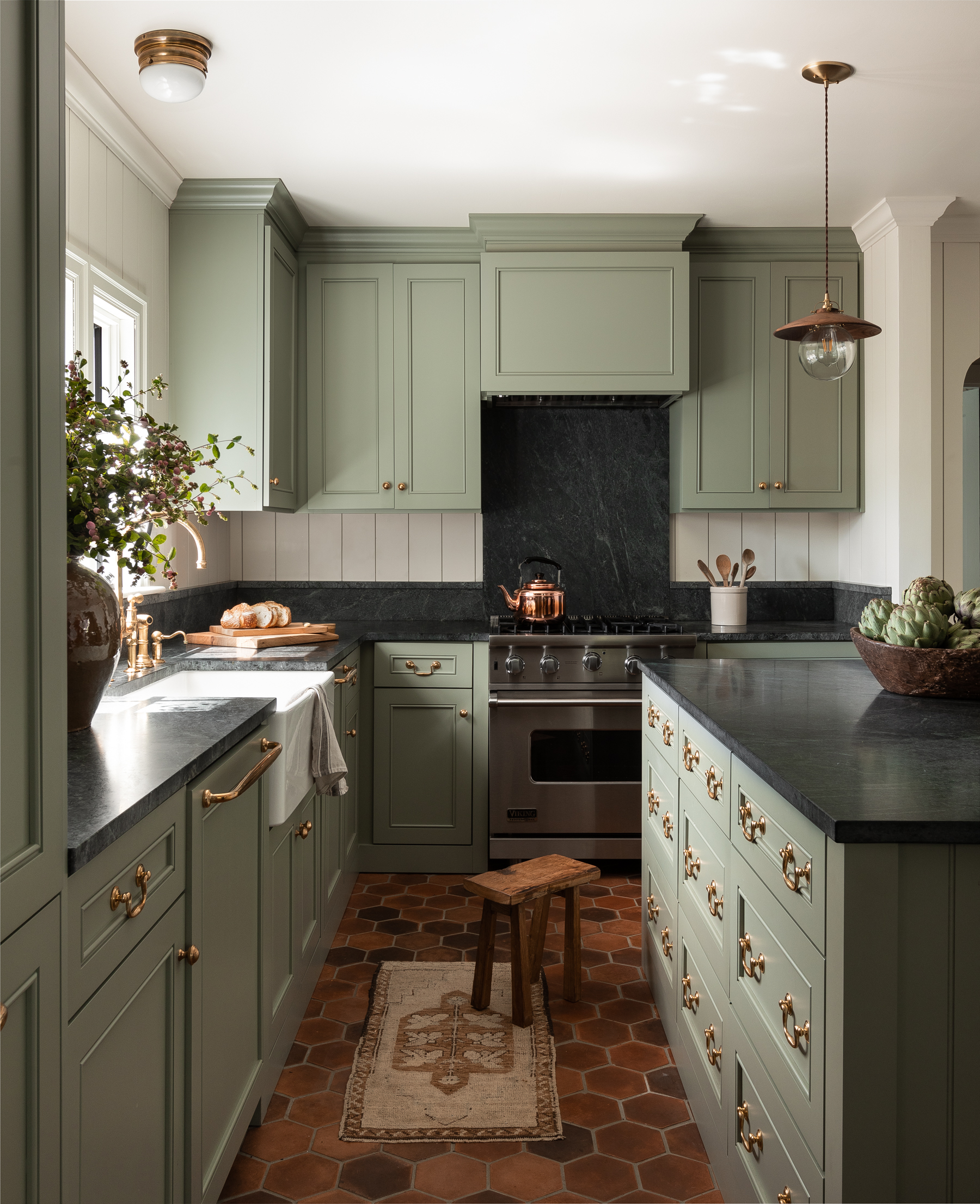We may earn revenue from the products available on this page and participate in affiliate programs.
If there’s one thing we’ve learned from veteran renovators, it’s that less is almost always more. Consider the backsplash, a critical (but surprisingly expensive) part of any kitchen remodel. What’s the difference between a low-cost kitchen renovation and an expensive one? Ten inches, give or take.
While the standard backsplash height is usually in the 15- to 20-inch range, if you’re on a budget, the magic number is 6. When designer Jaclyn Peters was reimagining avid baker Ashley Illchuck’s space, she had good reason to scale down: Illchuck wanted to splurge on soapstone counters. The soft, stain-resistant material is roughly $150 per square foot, so to continue it up the walls would have cost nearly $3,000—not including install. Instead, Peters only continued the backsplash up the wall for 6 inches (or whatever it was)—a small change that made a big impact, and not just on her budget. Here, three more reasons kitchen renovators swear by this work-around.
It Can Brighten Up a Sterile Space

While a stone such as Calacatta gold marble exudes warmth, a kitchen swathed in poured concrete skews cold and contemporary. To “tone down the boldness” at the firm’s Columbia Avenue project, Becca Stoltzfus, a designer at The Chris and Claude Co., opted for a subtle six-inch border, and the result is less jarring than the full foot of extended countertop that was originally considered. Not to mention Stoltzfus estimates they saved between $500 and $750.
You Can Put Offcuts to Work

Not sure what to do with the residual countertop chunks? Turn your leftovers into—what else?!—a backsplash. This idea works particularly well if you’re tight on space and only have a few small crannies to fill. “The tricky thing is matching up the pattern, especially if you used marble or something with more prominent veining,” says designer Heidi Callier. In other words, be wise about the kind of material you use. For example, you won’t have to play Tetris with something like a spotty terrazzo, which looks good any which way you spin it.
Add Texture to the Walls

The only real downside to a shorter backsplash is less coverage. After all, this feature’s main job is to protect the drywall from moisture. That’s where paint finish comes in. In this kitchen, Ingredients LDN used Venetian plaster above the Carrara marble trim. The treatment adds a richness to the room, but, more important, it’s waterproof and easy to wipe down. And like all of these ideas, it costs way less than adding miles of tile.

